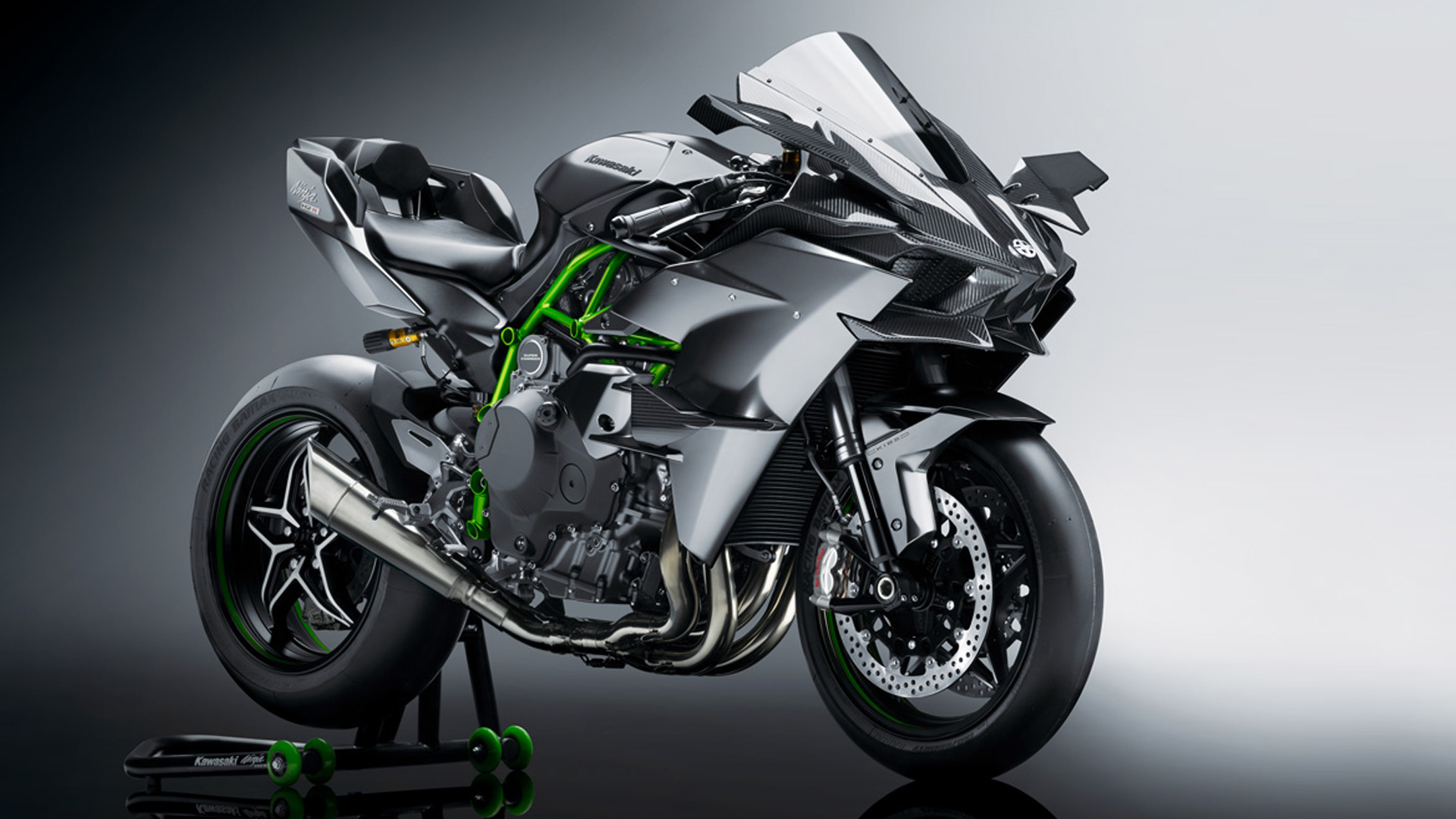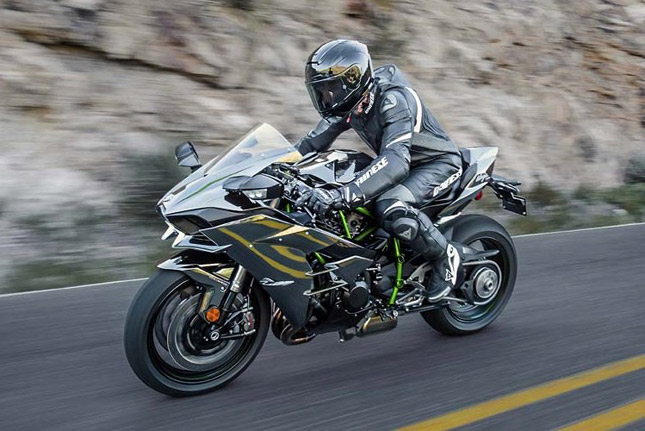Kawasaki Ninja H2R: A Legacy of Speed and Performance
Engine: The Heart of the Beast
At the heart of the Ninja H2R is its 998cc, four-cylinder supercharged engine, capable of generating up to an astonishing 310 horsepower (and up to 326 horsepower with Ram Air). Kawasaki opted for a centrifugal supercharger, designed in-house, to minimize lag and maximize power delivery across all RPMs. This choice differentiates the H2R from most high-powered motorcycles that rely on turbocharging, giving it a distinct, relentless acceleration that few can match.
Key Features of the H2R's Engine:
- Supercharging Technology: Kawasaki’s in-house supercharger utilizes a planetary gear system connected directly to the crankshaft, allowing it to spin up to 130,000 RPM, far surpassing the capabilities of traditional superchargers.
- High-Quality Materials: The supercharger impeller is made from high-precision CNC-machined aluminum, minimizing weight while withstanding extreme forces.
- Cooling Efficiency: Equipped with a large intercooler and a specially designed cooling system, the H2R can maintain high-performance output without overheating, even under demanding track conditions.
Aerodynamics and Design: Form Meets Function
The design of the H2R isn’t just about looking aggressive—it’s about providing the aerodynamic stability necessary for handling extreme speeds. Kawasaki partnered with aerospace engineers to create a carbon-fiber body with unique winglets, maximizing downforce and stability at high speeds.
Aerodynamic Innovations:
- Downforce Winglets: The H2R features carbon-fiber winglets on its fairing and sides, essential for keeping the front wheel down and enhancing stability.
- Ram Air Intake: The large front intake channels cool air directly to the supercharger, boosting power while helping keep engine temperatures under control.
- Lightweight Chassis: Kawasaki developed a trellis frame made of lightweight steel that offers both strength and flexibility, essential for handling the immense power of the H2R.
Advanced Electronics Suite: A Powerhouse of Control
Noteworthy Electronics:
- Kawasaki Traction Control (KTRC): KTRC offers three levels of traction control, enabling riders to tailor the bike's response to track conditions.
- Kawasaki Launch Control Mode (KLCM): Optimizes power delivery for fast starts, allowing riders to experience the H2R’s incredible acceleration safely.
- Kawasaki Cornering Management Function (KCMF): This system helps riders maintain optimal performance and stability, even while accelerating out of tight corners.
- Kawasaki Engine Brake Control (KEBC): The system lets riders adjust the level of engine braking, enhancing control during aggressive downshifting or corner entry.
Suspension, Braking, and Handling
The H2R is equipped with top-tier suspension and braking systems designed to handle extreme conditions on the track.
Suspension:
- Front Fork: The Showa Balance Free Front Fork (BFF) is a state-of-the-art suspension system that offers smooth, precise damping, critical for maintaining control at high speeds.
- Rear Shock: A fully adjustable Öhlins TTX rear shock helps manage rear-wheel stability and traction.
Braking:
- Brembo Braking System: The H2R uses Brembo’s high-performance M50 monobloc calipers, paired with 330mm discs, ensuring maximum stopping power.
- ABS: Though unconventional for a track-only bike, Kawasaki has included a race-derived ABS system on the H2R, allowing controlled deceleration under extreme braking conditions.



Comments
Post a Comment